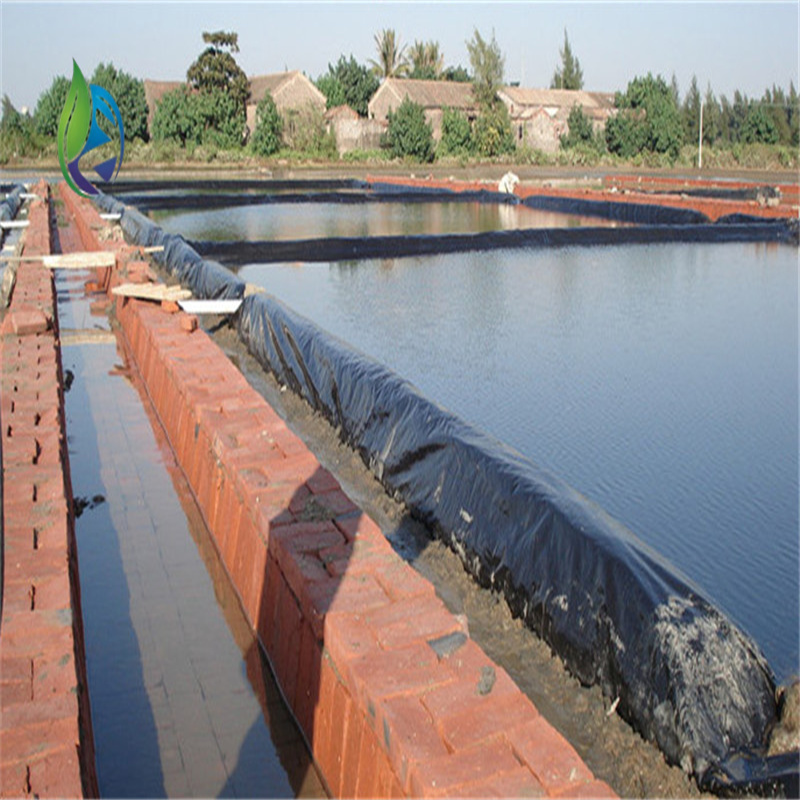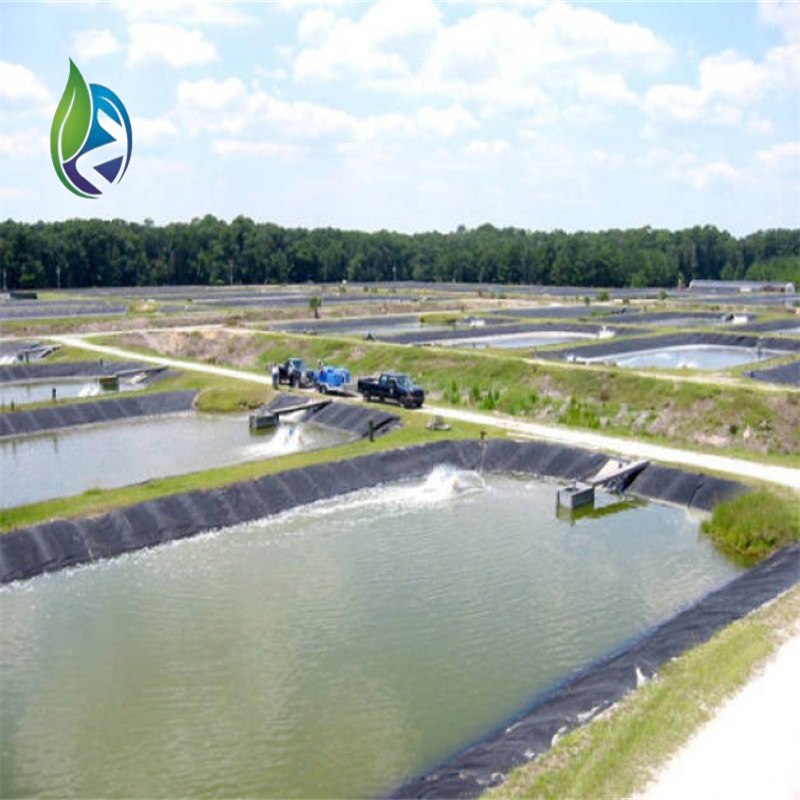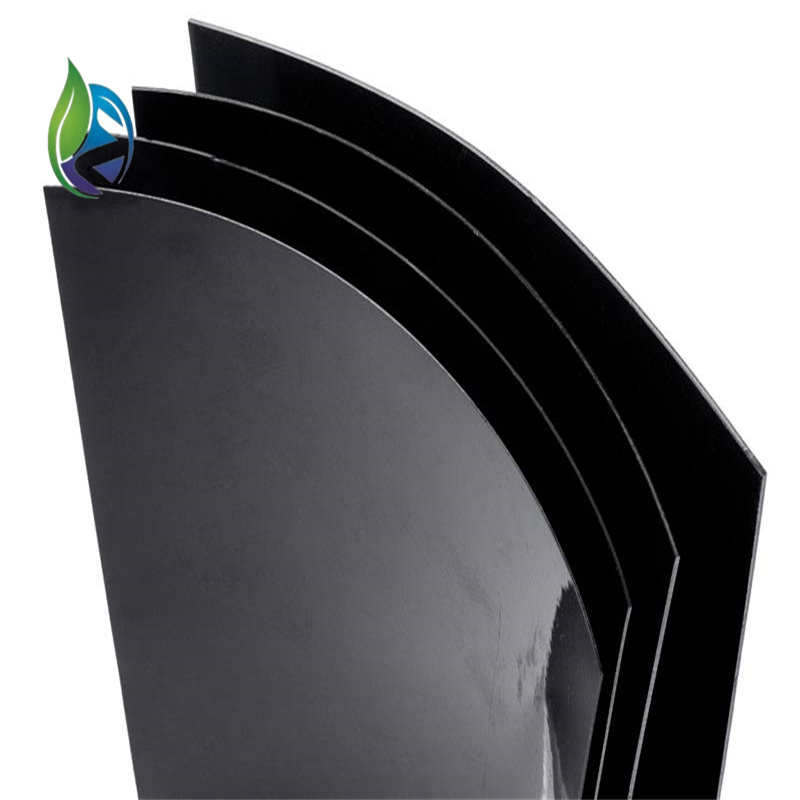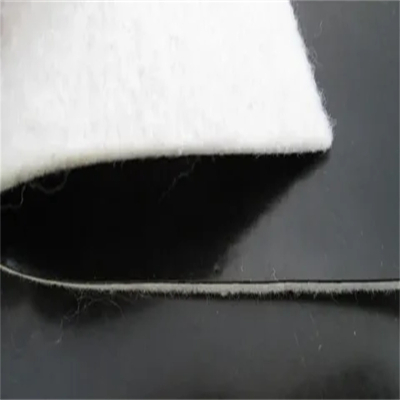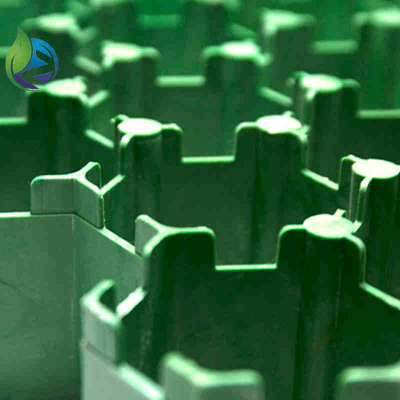Aquaponics waterproof geomembrane
Waterproof geomembrane liners play a crucial role in fish pond aquaculture by providing a reliable barrier to prevent seepage and maintain water quality. These liners, typically made of materials such as HDPE (High-Density Polyethylene) or PVC (Polyvinyl Chloride), offer excellent waterproofing properties and durability. The geomembranes can be customized to fit the specific dimensions of fish ponds and are installed using advanced seaming techniques to ensure a secure and seamless waterproofing system.
Support bulk ordering with favorable prices.
Support ODM/OEM.
The factory has stock and fast delivery.
Delivery Time: 10-20 working days
Minimum Order Quantity: 300 square meters
Payment Term: 30% T/T Deposit, 70% T/T Before Shipping
In the world of sustainable agriculture, aquaponics is making waves—literally. But while fish and plants often steal the spotlight, there's a quiet, crucial component that holds everything together: the aquaponics waterproof geomembrane.
Whether you're a commercial grower or a backyard enthusiast, choosing the right aquaponics waterproof geomembrane can determine your system’s longevity, water efficiency, and overall success.
? What Is an Aquaponics Waterproof Geomembrane?
An aquaponics waterproof geomembrane is a specially engineered barrier—typically made of HDPE (High-Density Polyethylene), LLDPE (Linear Low-Density Polyethylene), or PVC—that lines tanks, grow beds, or sump areas in an aquaponic system. Its primary job? Prevent water leakage, maintain structural integrity, and safeguard water quality for both fish and plants.
? User Review
“I didn’t realize how important the liner was until my first one cracked. After switching to a high-grade aquaponics waterproof geomembrane, I haven’t had a single issue. Totally worth it.”
— Ben R., Microfarm Operator, Oregon
? Why Geomembrane Quality Matters in Aquaponics
✅ 1. Absolute Waterproofing
Aquaponic systems require consistent water levels to maintain biological balance. A high-performance aquaponics waterproof geomembrane ensures zero seepage, even in high-pressure tanks or outdoor pond systems.
✅ 2. UV and Chemical Resistance
Aquaponic environments involve exposure to sunlight, fish waste, pH adjustments, and plant nutrients. A premium aquaponics waterproof geomembrane resists UV degradation, chemical erosion, and microbial growth, ensuring your system’s water remains clean and stable.
✅ 3. Safe for Aquatic Life
Look for geomembranes certified as non-toxic, BPA-free, and food-safe. A low-grade liner can leach harmful substances into the water, disrupting your fish population and plant health.
?️ Choosing the Right Geomembrane for Your System
Not all geomembranes are created equal. Here are essential specs to look for when selecting an aquaponics waterproof geomembrane:
| Feature | Ideal Specification |
|---|---|
| Thickness | 0.5mm to 2mm (depending on use) |
| Material | HDPE or LLDPE (flexible & durable) |
| Toxicity | Certified food-grade, fish-safe |
| Tensile Strength | ≥ 20 MPa |
| Installation Flexibility | Easy to weld or seam |
| UV Resistance | ≥ 10 years outdoor exposure |
“For larger grow beds, I always recommend 1.0mm HDPE. It’s tough, pliable, and holds up great during seasonal changes.”
— Harpreet S., Commercial Aquaponics Designer
? Where Is an Aquaponics Waterproof Geomembrane Used?
The aquaponics waterproof geomembrane is not a one-size-fits-all solution. Its application varies by system design and scale:
? Backyard Systems
Used to line fish tanks or raised grow beds in home gardens. Flexibility and food-grade certification are top priorities.
? Commercial Farms
Deployed in large-scale fish tanks, sump reservoirs, or DWC (Deep Water Culture) channels. Durability and long-term performance are essential.
? Outdoor Setups
If exposed to sunlight, your aquaponics waterproof geomembrane needs UV stabilization. Many LLDPE or HDPE liners are treated to handle intense sun exposure.
? Pro Tip: Don't Overlook Drainage Zones
A well-installed aquaponics waterproof geomembrane should also include appropriate drainage layers and underlayment to prevent punctures from sharp rocks or roots. These seemingly minor details can dramatically extend the life of your liner.
? Customer Experience
“After using a cheap liner that tore within months, I upgraded to a professional-grade aquaponics waterproof geomembrane with proper drainage fabric. No leaks since, and my tilapia are thriving.”
— Sophia L., Urban Grower, Singapore
? Environmental Benefits of Using Quality Geomembranes
Investing in a durable aquaponics waterproof geomembrane isn't just good for your farm—it’s good for the planet.
Water Conservation: Zero leakage means less water usage
Waste Reduction: Long service life = fewer replacements
Closed-Loop Efficiency: Promotes a healthier, chemical-free ecosystem
❓ FAQ – Everything You Wanted to Ask
Q1: Is a geomembrane better than a rigid tank liner?
A: Yes, especially for irregular shapes. Geomembranes conform easily and offer seamless protection with fewer joints.
Q2: Can I install an aquaponics waterproof geomembrane myself?
A: For small systems—absolutely. For larger installations, it’s best to hire a certified liner technician to weld or seal it properly.
Q3: How long will it last?
A: With the right thickness and UV protection, most aquaponics waterproof geomembranes last 15–25 years.
Why This Keyword Matters
Search volume for "aquaponics waterproof geomembrane" is growing fast as more users embrace eco-farming and sustainable water use. This high-intent, low-competition keyword is a goldmine for content marketers, manufacturers, and sellers in the aquaculture and agriculture space.
Targeting this term with rich, helpful content like this post can:
Drive organic traffic from DIYers and commercial growers alike
Convert leads faster with high-trust educational writing
Establish your brand as an authority in the aquaponics community
? Ready to Upgrade Your Aquaponics System?
The secret to a reliable, long-lasting aquaponics setup lies beneath the surface. Don’t let poor waterproofing be your weakest link.
✅ Choose aquaponics waterproof geomembrane for leak-proof performance
✅ Safe for your fish, gentle on your plants
✅ Built for long-term sustainability
Applications in Aquaponics:
Fish Tanks: Waterproof geomembranes line fish tanks and ponds to ensure the containment of water, creating a stable aquatic environment for fish.
Hydroponic Beds: They also line the plant-growing beds, which help maintain the required moisture level and prevent water loss through seepage.
Recirculating Water Systems: Aquaponics systems use recirculating water, and waterproof geomembranes help to preserve water levels and ensure the water moves efficiently through the system.
Benefits:
Water Conservation: By preventing leaks, the geomembrane ensures that water is conserved, reducing the overall water consumption of the system.
System Stability: Maintaining a stable water environment is crucial in an aquaponics system, and the geomembrane plays a key role in keeping water at the right levels and preventing contamination.
Cost-Effectiveness: Waterproof geomembranes reduce the need for frequent water replenishment, lowering operational costs over time.
Sustainability: These materials help ensure the longevity and sustainability of aquaponics systems by minimizing the risk of leaks and maintaining an eco-friendly balance between fish and plants.
Aquaponics waterproof geomembranes are an essential part of any successful aquaponics system. They provide the critical waterproofing needed to ensure proper water management, maintain ecological balance, and improve system efficiency. By using high-quality geomembranes, aquaponics systems can achieve higher sustainability, reduce water wastage, and support healthier plant and fish production.
Customer's company Logo mark can be added.
Packed in woven bags

